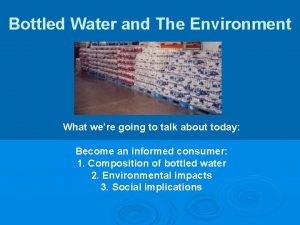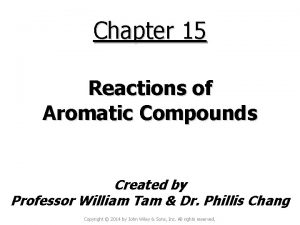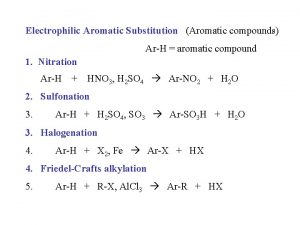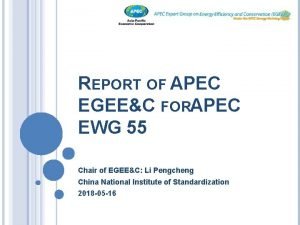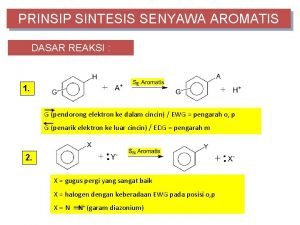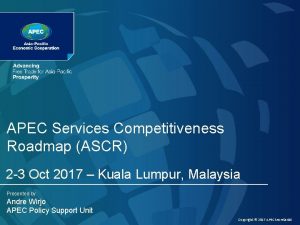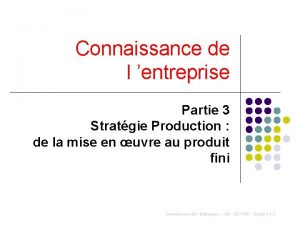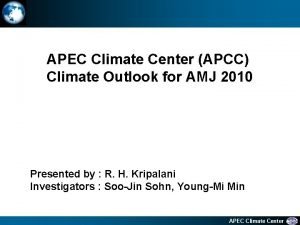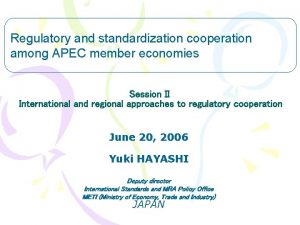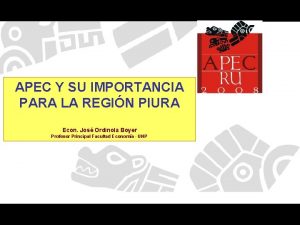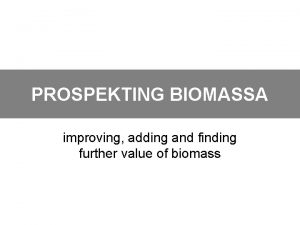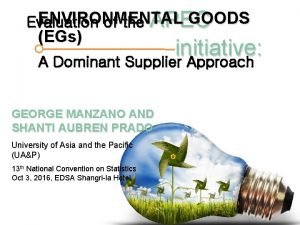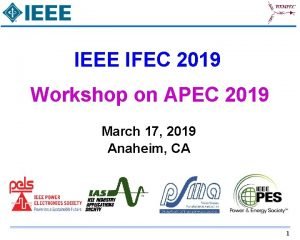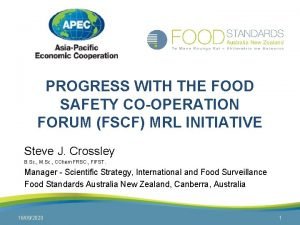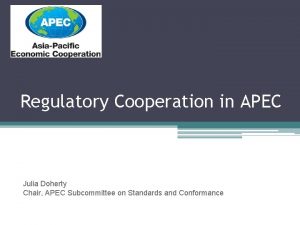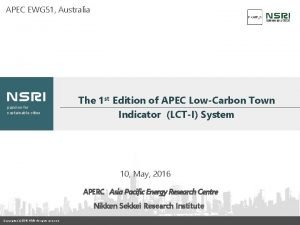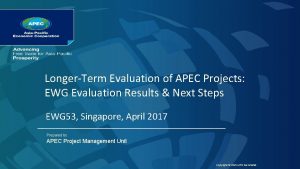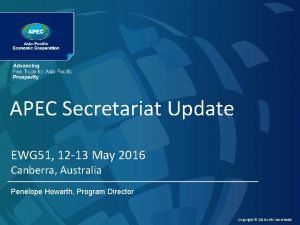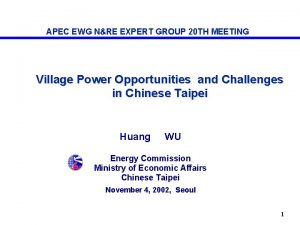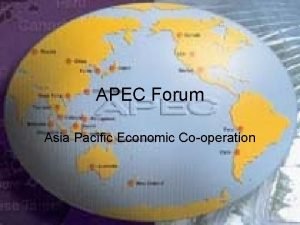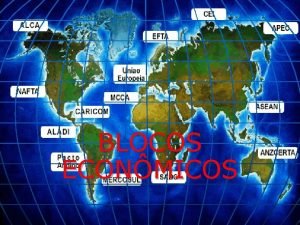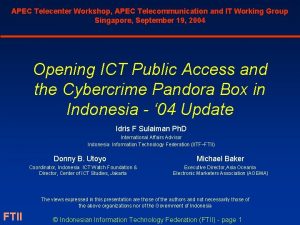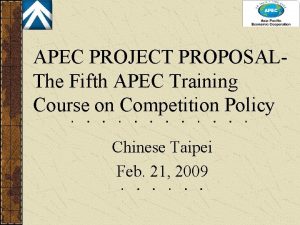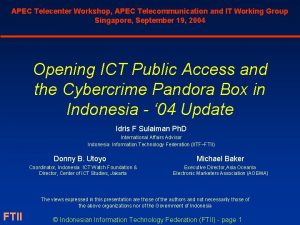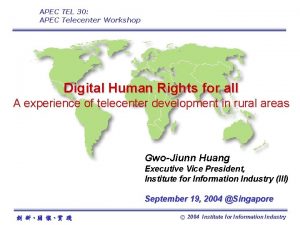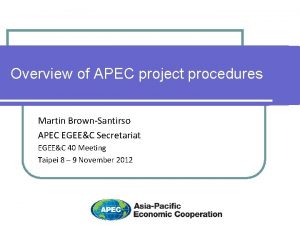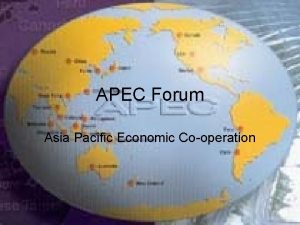REPORT OF APEC EGEEC FORAPEC EWG 56 Chair

















- Slides: 17

REPORT OF APEC EGEE&C FORAPEC EWG 56 Chair of EGEE&C: Li Pengcheng China National Institute of Standardization 2018 -10 -06

MANDATES OF APEC EGEE&C Enhance cooperation to achieve APEC’s aspirational goal of reducing energy intensity of the APEC economies by at least 45% by 2035, using 2005 as a base year; Advance the application of demonstrated energy-efficiency practices and technologies in appropriate regional end-use sectors (residential, commercial, industrial, agricultural, transportation, etc); Assist in developing and enhancing trade in energy-efficiency products and services between APEC member economies; Contribute to international efforts to reduce the adverse impacts of energy production and consumption upon our global environment; and Improve the analytical, technical, operational and policy capacity for energy efficiency and conservation within member economies.

GOVERNANCE AND MEETINGS 11 economies participated in the APEC Expert Group Joint Meeting of EGEE&C 52 nd and EGNERT 51 st, held on September 10– 14, 2018 in Chiang Mai, Thailand. 1 cross-fora updates: APERC 7 projects update (all are on schedule) 2 workshops were organized in the margin of EGEE&C 52 � APEC Workshop on Refrigerator/Freezer Energy efficiency improvement in APEC region � ASEAN Workshop on Energy efficiency prosperity


10 ONGOING PROJECTS (1) EWG-04 - 2015 A Enhancing Regional Capacity to Ensure Successful ISO 50001 Outcomes (US) EWG-01 - 2016 A Gaps Assessment on APEC Energy Efficiency and Conservation Work Toward Fulfilling the Leaders’ Energy Intensity Reduction Goal (US) EWG-05 - 2016 A Reducing Losses in Power Distribution through Improved Efficiency of Distribution Transformers (China) EWG-08 -2016 A Workshop to Develop Qualified Product Lists for High-Quality and High-Efficiency Commercial, Industrial, and Outdoor Lighting Products and Control Systems in the APEC Region (US) EWG-10 -2016 A APEC Peer Review on Energy Efficiency (PREE) Phase 6 (Japan)

10 ONGOING PROJECTS (2) EWG-15 -2016 A APEC Nearly (Net) Zero Energy Building Roadmap Study responding to COP 21 (China) EWG-14 -2016 A Incubator for Enhancing Commercial Buildings Energy Performance (Australia) EWG-19 -2016 A APEC Workshop on Promoting the Development of an Evaluation Community (US) EWG-07 -2017 A Refrigerator/Freezer Energy Efficiency Improvement in APEC Region: Review of Experience and Best Practices (Chinese Taipei) EWG 08 2017 A APEC Peer Review on Energy Efficiency (PREE) Phase 7 (Follow-Up PREE) (Japan)

NEW PROJECTS – 5 CNS Transportation � Building � Sustainable Mobility: Routes for integrating the Energy and Transport Sectors for Urban Cities(US) APEC Zero Energy Building Initiative(China) Cross-cutting issues Exploring Co-Benefit Opportunities for Renewable Energy and Energy Efficiency Projects in the APEC Region(Thailand) � Evaluation of Energy Technologies, Sustainable development goals and national climate actions(US) � Research on Forms of Low-carbon Energy System and Best Practices for APEC Sustainable Cities (China, Self-fund project) �

NEW PROJECTS APEC Zero Energy Building Initiative A Zero energy initiative is a most effective way to call for more attention from all people care about energy and environment, hence to realize regional goals of carbon emission reductions in the building sector. Currently, APEC economics such as USA, Canada, Korea, and Japan had already published their mid-term and long term goal and roadmaps to achieve these goals. So, if an INITIATIVE could be launched, then it will benefit all APEC economies in a longer time in a sustainable way.

APEC ENERGY INTENSITY GOAL According to the analysis by APERC � Similarly to last time, recent trend looks good. After discussion during 52 nd meeting, We request APERC provide decomposition analysis of Energy Intensity for different sectors It will be helpful for APEC economies to understand current situation and potential for different sectors EGEEC will work with APERC to develop tailored recommendations on keeping on current target or improving target for whole APEC/specific sectors

APEC ENERGY STANDARD INFORMATION SYSTEM (ESIS) APEC ESIS provides: APEC oriented online portal to the CLASP Standards & Labelling Database � Updates for APEC economies to the S&L Database � Attending EGEE&C meetings to report on status of ESIS and polices in APEC region � All funding exhausted in October 2017 and APEC-ESIS website is down. The update of S&L information of APEC economies is still available in the website of CLASP since it maintains a global database for S&L. We requested CLASP to provide some inputs but didn’t receive any feedbacks. Plan of added functions ESIS, except those functions of CLASP website; (in-depth analysis of S&L, compare research of S&L) for APEC Budget for operating ESIS Self-sustainable business model (On-line advertisement)


COORDINATION WITH IPEEC (1) IPEEC summarized that Task Groups of G 20 EELP have focused on the following item over the past four years: � Measuring and tackling the energy consumption of Heavy Duty Vehicles (HDV), as a � � � � critical element for sustainable economic growth in the global transport sector. Dealing with the growing energy challenges posed by network-connected devices, as well as the opportunities for energy savings that such products offer. Encouraging greater capital flows for energy efficiency investments in the G 20 to unlock the large potential for efficiency improvements. Working on effective energy efficiency policies in the buildings sector, with a focus on rating systems and codes to address the energy footprint of this area. Encouraging greater energy efficiency uptake in industry by sharing tools and best practices on the use of Energy Management Systems (En. MS). Supporting energy efficiency improvements in conventional electricity generation by encouraging the understanding and dissemination of High Efficiency Low Emissions (HELE) technologies. Accelerating the deployment of highly efficient products that are driving global electricity demand. Compiling energy efficiency best practices (BPs) and best available technologies (BATs), for use by policy-makers and businesses, to help accelerate the widespread application of these, and further technological innovations. Sharing technical information, enhancing communication and outreach on the issue of energy end-use data and energy efficiency metrics that are required for good policy development, implementation and evaluation.

COORDINATION WITH IPEEC (2) Behavior change was proposed as a critical aspects that contribute to the success of energy efficiency policies in IPEEC summary report It can act as a bridge among innovation, technological progress, and energy efficiency measures. By filling a gap in countries´ policy cycles – and acting as a “missing link” – it plays and essential role in facilitating the effective adoption of new energy efficiency measures and technologies - thus, delivering greater benefits for consumers and all sectors of the economy. � It can help address the challenging 'rebound effect' associated with efficiency gains, and has a role in facilitating the roll-out of smart grids and decentralised energy generation. New efforts in this space could amplify the achievements to date, and yield greater results for international collaboration on energy efficiency more broadly, including those achieved under the EELP. �

GOVERNANCE ISSUES (1) Successive Chair of EGEE&C � seeking the successive Chair/Co-Chair of APEC EGEE&C before the end of 2018. Hong Kong, China show their willingness to Nominate Candidate of Co-Chair of EGEE&C � Nomination of Co-Chair would be send to EGEE&C secretary and election may take place in EGEE&C 53 � China will continue to work with Hongkong, China as co-chair of EGEEC in the transition period.

GOVERNANCE ISSUES (2) The 53 rd. EGEE&C meeting is expected to be held in March or April, 2019. The arrangement of joint meeting with EGNRET will be prepared. Hong. Kong, China may host upcoming EGEE&C meeting. Workshops alongside the 53 rd EGEE&C meeting � PREE EEP workshop

GOVERNANCE ISSUES (3) EGEEC weblink � Website of EGEEC is preparing � Website will be published before the next meeting

THANK YOU FOR YOUR ATTENTION!
